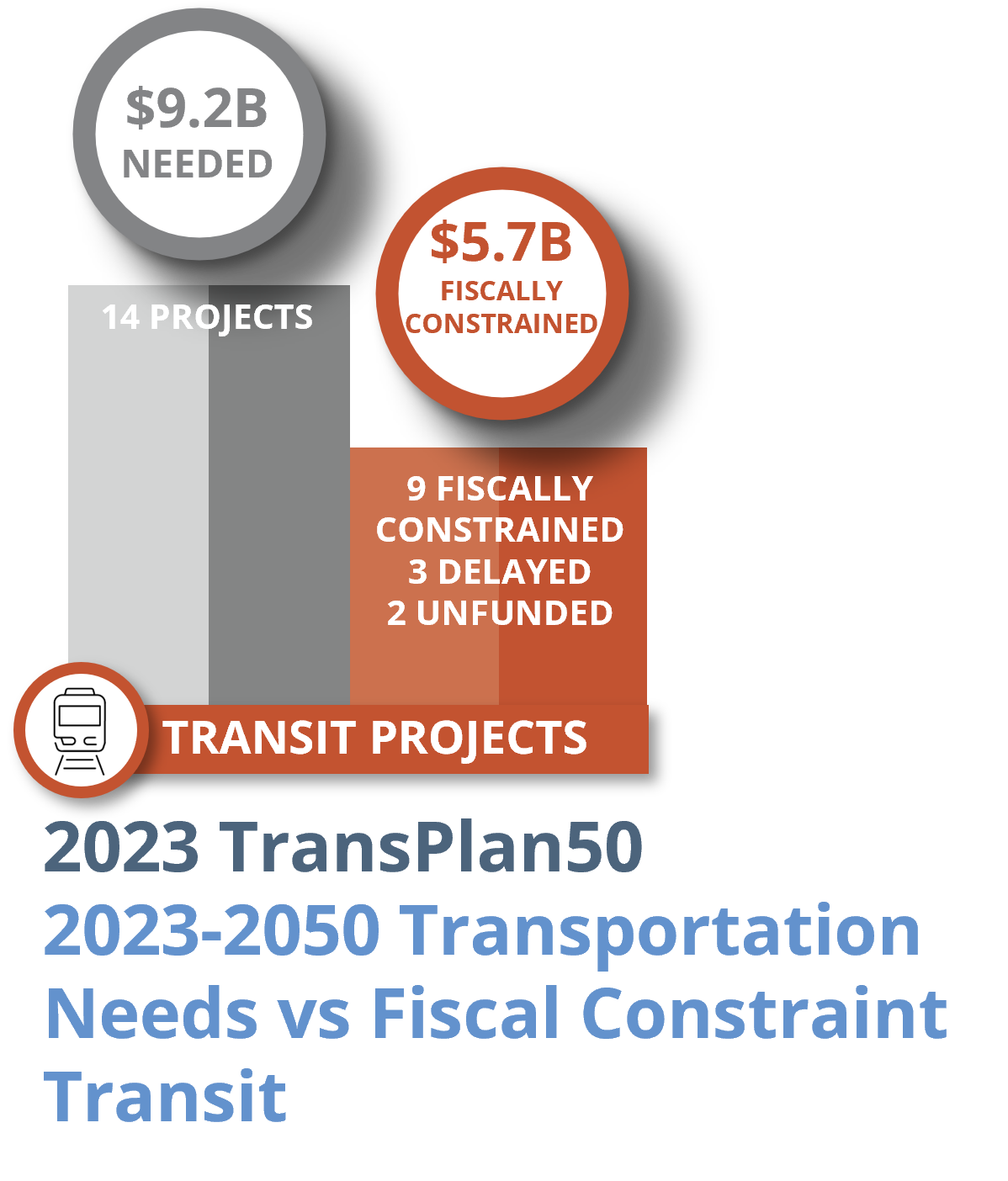![]()
Transit Project Development
TransPlan50 plans to create a more frequent, expansive transit system that runs more often, is reliable, and gives a choice over an automobile. A robust transit system can help reduce congestion, clean up the air, be more efficient for commuters, and better assist underserved communities.
Currently, transit in Utah County is evolving. The bus system currently serves with both coverage and frequency in the Provo and Orem areas, with less service in the north and south county. Low-density residential in the north and south areas and a lack of clustered job centers makes transit less efficient and underutilized.
Today, transit generally serves commuters, students, and underserved communities. Future growth plans, especially in the north and west areas of the county, provide for better efficiencies. Projects in the plan are developed from numerous studies, stakeholder and public input, and UTA.
![]()
Major Transit projects
The future transit system includes the expansion of FrontRunner (commuter rail), extensions of the Utah Valley Express or UVX (bus rapid transit), and 15-minute Core Route Network (high frequency bus service) to the high-growth areas of the northwest and south Utah County. Also planned is high-frequency transit (mode to be determined) along the State Street corridor from the Point of the Mountain in Salt Lake County to the Provo FrontRunner Station or the Provo Airport. Future studies will help determine whether the high-frequency service will be a Bus Rapid Transit system like Utah Valley Express (UVX) in Provo/Orem or a Light Rail system like TRAX in Salt Lake County.
Further detail on these projects and more local routes such as on-demand service and local bus are addressed in UTA's Long Range Transportation Plan (LRTP) UTA Moves 2050. (currently in development with full plan to release Fall 2023)
Click on the different major transit projects on the map below to learn more about them.
![]()
NEEDED PROJECTS COSTS & FUNDING AVAILABILITY
To create the 30-year transit plan projects, needed costs, projected revenues, and any deficits are first identified. To generate plan costs, new capacity projects are proposed, system operations are analyzed, and maintaining the system in a state of good repair is prioritized. Revenues are derived from sales tax, passenger fares, and federal funding. A more detailed analysis can be found in the Financial Appendix. Combined with assumed revenues from sales tax, government appropriations, and bonding, needed capacity projects in the plan are underfunded by $300 million in the first phase, $600 million in the second phase, and $700 million in the third phase. Most projects are fiscally constrained when needed, with only two projects, FrontRunner Fleet Upgrades in Utah County and Central High Frequency Corridor, Light Rail, not funded.

![]()
Transit Maps
Needed & Fiscally constrained Projects
These maps show all the transit projects planned in TransPlan50. Transit needs mostly align with funds available.
Slide between the left map, which shows projects by needed phase, and the right, which shows when funding is planned to be available.